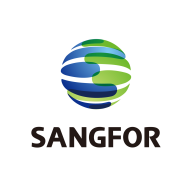


Sangfor NGAF and Check Point Harmony SASE compete in the cybersecurity segment, focusing on different aspects of network protection. Sangfor NGAF holds an edge in user-friendliness and cost-effectiveness, while Check Point Harmony SASE excels in flexibility and advanced security features.
Features: Sangfor NGAF emphasizes ease of use, reliable security with a strong virus database, and straightforward deployment. It offers comprehensive security with high integration and straightforward management. Check Point Harmony SASE is strong in Zero Trust Network Access, providing secure access without needing a full VPN, and offers a broad security suite on a cloud-native platform.
Room for Improvement: Sangfor NGAF might improve with integrated consoles and better market exposure, alongside enhancements in its user interface and logging capabilities. Check Point Harmony SASE could improve its third-party identity provider integration, transparency in reporting, and extend mobile support capabilities.
Ease of Deployment and Customer Service: Sangfor NGAF is noted for its easy deployment and excellent local support, particularly in on-premises environments. Check Point Harmony SASE benefits from flexible cloud deployments and could enhance its support responsiveness and user experience consistency.
Pricing and ROI: Sangfor NGAF is considered cost-effective, being less expensive than competitors like Fortinet and Sophos, offering a high ROI despite potential maintenance cost increases. Check Point Harmony SASE is moderately priced, providing value through its extensive features, although potentially costlier for smaller businesses due to its comprehensive offerings.
| Product | Market Share (%) |
|---|---|
| Fortinet FortiGate | 20.4% |
| Check Point Harmony SASE (formerly Perimeter 81) | 0.2% |
| Sangfor NGAF | 1.2% |
| Other | 78.2% |



| Company Size | Count |
|---|---|
| Small Business | 350 |
| Midsize Enterprise | 130 |
| Large Enterprise | 187 |
| Company Size | Count |
|---|---|
| Small Business | 53 |
| Midsize Enterprise | 18 |
| Large Enterprise | 15 |
| Company Size | Count |
|---|---|
| Small Business | 15 |
| Midsize Enterprise | 10 |
| Large Enterprise | 10 |
Fortinet FortiGate excels in providing integrated VPN, firewalling, and Unified Threat Management (UTM) with centralized management and high availability. It supports remote access and comprehensive threat protection, making it a preferred choice for securing networks.
Fortinet FortiGate offers a robust security platform with features such as strong intrusion prevention, application control, and web filtering. Its integration with Active Directory and SD-WAN functionality provides scalable solutions for large networks. Users appreciate its ease of use through centralized management interfaces, ensuring robust security with flexible configurations. However, FortiGate could enhance its graphical interface and technical support responsiveness, address firmware bugs and costly licensing, improve logging, integrate better with third-party tools, and strengthen scalability and memory for log storage. Complexity in configuration and the need for intuitive features are noted challenges, and there's a demand for advanced security, zero-trust capabilities, and AI integration.
What are the key features of Fortinet FortiGate?Fortinet FortiGate is widely implemented across industries like education, finance, and government. Companies use it for firewall protection, VPN, and SD-WAN capabilities, ensuring secure perimeter and data center security. It facilitates remote access management and traffic routing optimization, offering reliable security and connectivity solutions.
Check Point Harmony SASE, formerly Perimeter 81, offers robust security features like split tunneling, MFA, and Zero Trust Network Access focused on secure remote access and optimized connectivity for remote teams.
Check Point Harmony SASE delivers advanced security through a user-friendly interface, efficient VPN connections, and a centralized management console. It enhances security with real-time threat intelligence from ThreatCloud and traffic management via built-in optimization. Firewall as a Service and Secure Web Gateway safeguard against unauthorized access and phishing. While users seek enhanced networking customizations and better integration with identity providers, there's an emphasis on improving reporting, real-time analytics, and policy management. Requests also include a Chrome extension, traffic balancing, and simplified configuration to address some resource-intensive aspects.
What are the key features of Check Point Harmony SASE?
How can organizations benefit from using Check Point Harmony SASE?
Check Point Harmony SASE is used across industries for secure remote access and connectivity, protecting sensitive data, and managing access to corporate resources. It is ideal for those with hybrid cloud models and requires comprehensive security measures combined with existing IT infrastructures to meet specific industry demands.
Sangfor Next Generation Firewall (also known as NGAF) is a converged security solution providing protection against advanced threat, malware, viruses, ransomware and web-based attacks using integrated security features like firewall, IPS, anti-virus, anti-malware, APT, URL filtering, Cloud Sandbox, and WAF. As the world's first AI-enabled and fully integrated Next Generation Firewall & Web Application Firewall (WAF), NGAF offering the security visibility, real-time detection and response, simplified operation and maintenance and high-performance application layer security needed to operate an enterprise network in total security. Tested and proven to provide cutting-edge network security by ICSA Labs and endorsed by Gartner Inc., NGAF harnesses the power of Sangfor’s Neural-X threat intelligence and analytics platform and Engine Zero’s innovative malware detection to provide next-generation protection for today’s enterprise.
We monitor all Firewalls reviews to prevent fraudulent reviews and keep review quality high. We do not post reviews by company employees or direct competitors. We validate each review for authenticity via cross-reference with LinkedIn, and personal follow-up with the reviewer when necessary.